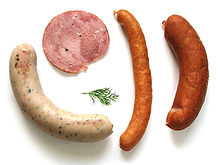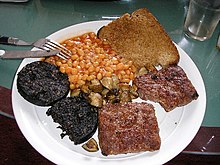**1. Sausage Origins and History:**
– The word ‘sausage’ originated from Old North French ‘saussiche’ and Vulgar Latin ‘salsica’.
– Sausage making is linked to efficient butchery and preservation methods.
– Sausages, puddings, and salami are among the oldest prepared foods.
– Evidence suggests sausages were popular in ancient Greece and Rome.
**2. Sausage Ingredients and Casings:**
– Sausages consist of meat, fillers, and other ingredients in a casing.
– Traditional casings were made of cleaned intestines or stomachs.
– Today, casings can be natural or synthetic like collagen, cellulose, or plastic.
– Meats commonly used include pork, beef, veal, or poultry.
**3. National and Regional Sausage Varieties:**
– Many nations and regions have unique sausages made with native ingredients.
– Each country or region may have distinct flavors, spices, and preparation methods.
– Examples include British and Irish sausages, Latin American chorizo, and Asian sausages like lap cheong and Sai Oua.
**4. Global Sausage Varieties:**
– Different countries have their own sausage specialties like Vigan longganisa, Sai ua from Thailand, and chorizo from Latin America.
– Unique sausages like Lap chong from China and Salame tandilero from Argentina are enjoyed globally.
– Traditional sausages from Poland, Germany, Iceland, and Norway showcase regional preferences and flavors.
**5. Sausage Consumption and Popularity:**
– Sausages are consumed worldwide during various festivities and cultural events.
– Popular dishes like bangers and mash in the UK and asado in Argentina highlight the cultural significance of sausages.
– Health and legal aspects of sausage consumption, along with cooking techniques and recipes, play a role in their popularity.
This article needs additional citations for verification. (October 2022) |
A sausage is a type of meat product usually made from ground meat—often pork, beef, or poultry—along with salt, spices and other flavourings. Other ingredients, such as grains or breadcrumbs may be included as fillers or extenders.




When used as an uncountable noun, the word sausage can refer to the loose sausage meat, which can be formed into patties or stuffed into a skin. When referred to as "a sausage", the product is usually cylindrical and encased in a skin.
Typically, a sausage is formed in a casing traditionally made from intestine, but sometimes from synthetic materials. Sausages that are sold raw are cooked in many ways, including pan-frying, broiling and barbecuing. Some sausages are cooked during processing, and the casing may then be removed.
Sausage-making is a traditional food preservation technique. Sausages may be preserved by curing, drying (often in association with fermentation or culturing, which can contribute to preservation), smoking, or freezing. Some cured or smoked sausages can be stored without refrigeration. Most fresh sausages must be refrigerated or frozen until they are cooked.
Sausages are made in a wide range of national and regional varieties, which differ by the types of meats that are used, the flavouring or spicing ingredients (e.g., garlic, peppers, wine, etc.), and the manner of preparation.
